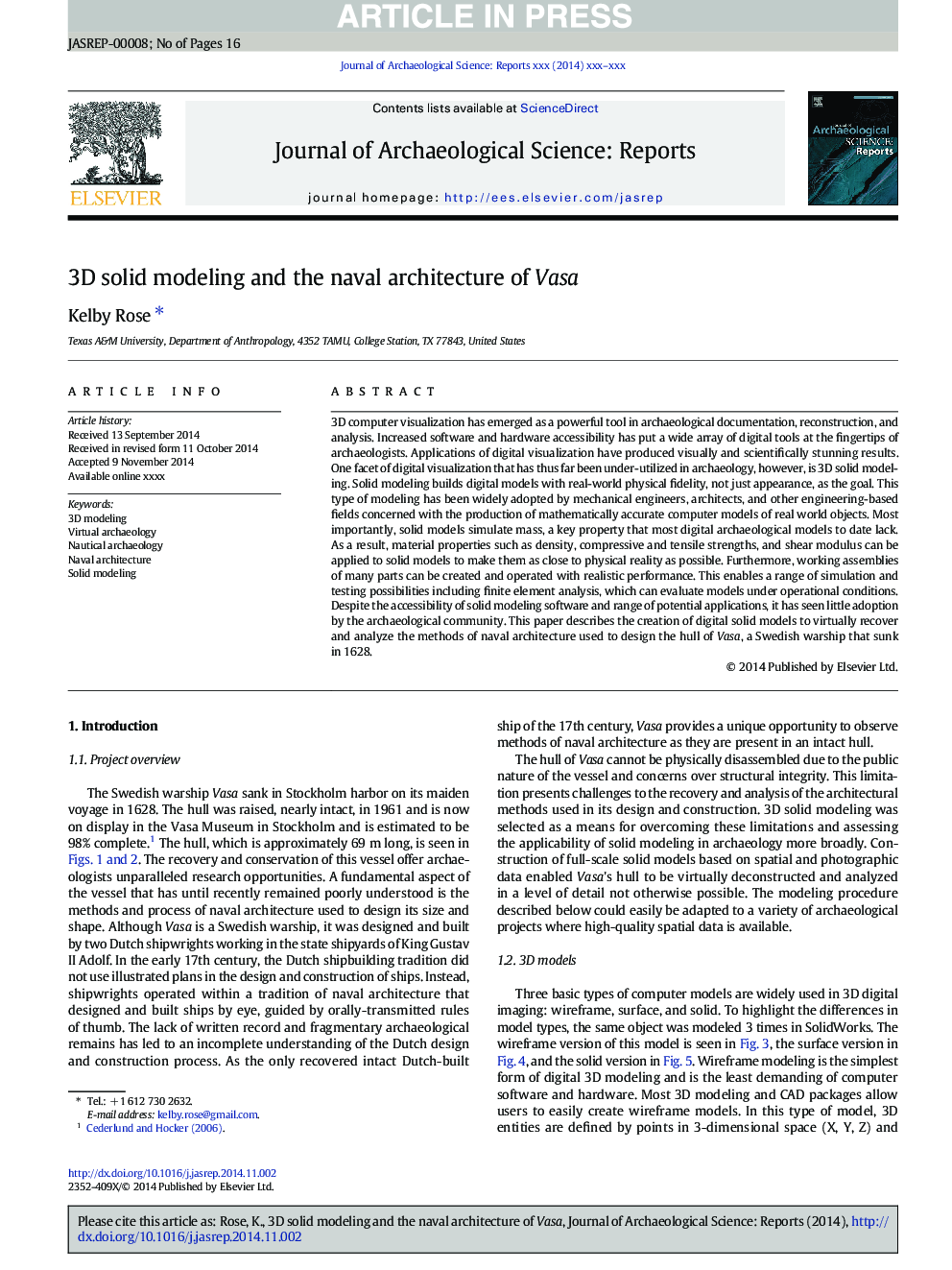| Article ID | Journal | Published Year | Pages | File Type |
|---|---|---|---|---|
| 7446615 | Journal of Archaeological Science: Reports | 2015 | 16 Pages |
Abstract
3D computer visualization has emerged as a powerful tool in archaeological documentation, reconstruction, and analysis. Increased software and hardware accessibility has put a wide array of digital tools at the fingertips of archaeologists. Applications of digital visualization have produced visually and scientifically stunning results. One facet of digital visualization that has thus far been under-utilized in archaeology, however, is 3D solid modeling. Solid modeling builds digital models with real-world physical fidelity, not just appearance, as the goal. This type of modeling has been widely adopted by mechanical engineers, architects, and other engineering-based fields concerned with the production of mathematically accurate computer models of real world objects. Most importantly, solid models simulate mass, a key property that most digital archaeological models to date lack. As a result, material properties such as density, compressive and tensile strengths, and shear modulus can be applied to solid models to make them as close to physical reality as possible. Furthermore, working assemblies of many parts can be created and operated with realistic performance. This enables a range of simulation and testing possibilities including finite element analysis, which can evaluate models under operational conditions. Despite the accessibility of solid modeling software and range of potential applications, it has seen little adoption by the archaeological community. This paper describes the creation of digital solid models to virtually recover and analyze the methods of naval architecture used to design the hull of Vasa, a Swedish warship that sunk in 1628.
Related Topics
Social Sciences and Humanities
Arts and Humanities
History
Authors
Kelby Rose,
